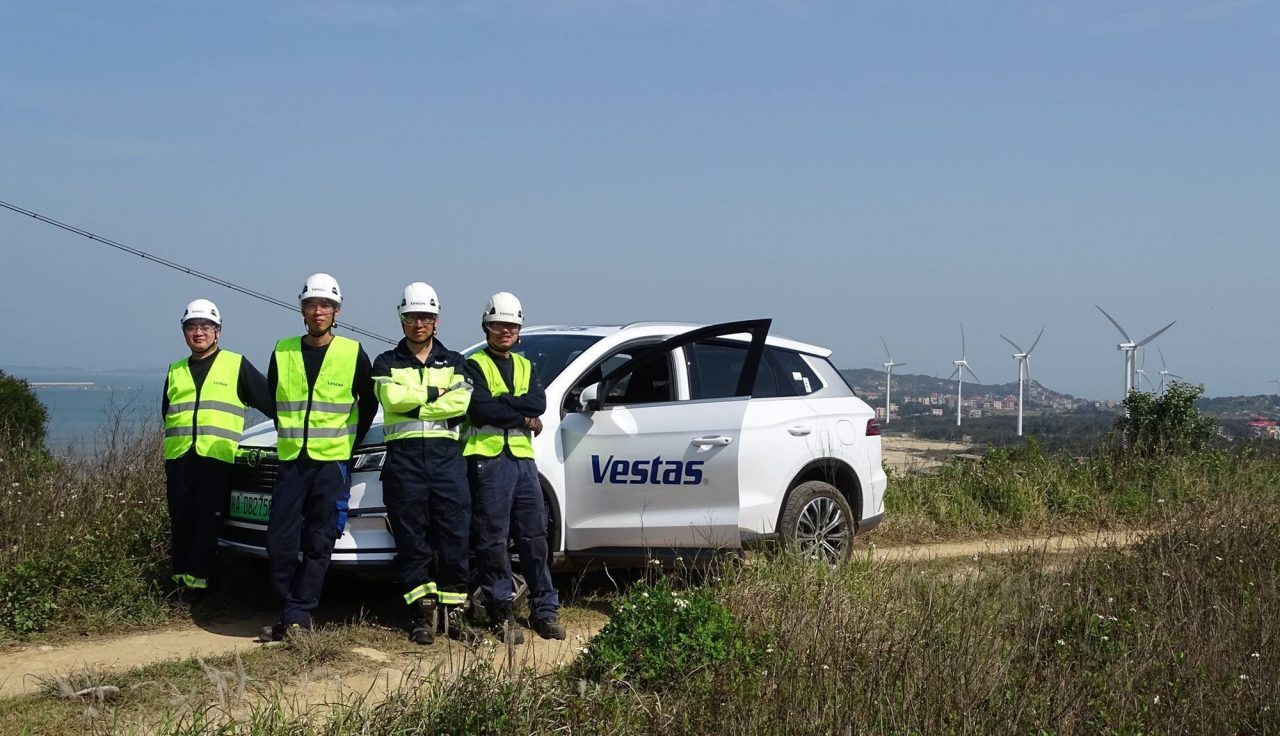Vestas launches electric service vehicle program in China
Sustainability
Lisa Ekstrand
Senior Director and Head of Sustainability at Vestas
Published on 22nd of May 2020

In January 2020, Vestas launched its new sustainability strategy, entitled ‘Sustainability in everything we do’. The strategy encompasses four key objectives, each designed to enable the integration of sustainable practices across all business operations. Establishing a fully sustainable value chain and operational infrastructure will be pivotal in ensuring that Vestas can achieve its goal of becoming the global leader in sustainable energy solutions.
One key objective within the Sustainability Strategy is Vestas’ commitment to become carbon neutral in its own operations by 2030, without the use of carbon offsets. To move towards this goal, Vestas will be replacing all new service vehicles with electric or renewable fueled vehicles (EVs) by 2025, and pilots will be introduced in several markets throughout 2020 This program has already taken off in China, where the first EV have is in operation in the Fuijan Province, since January.
Zhitao Xin, a Vestas Service employee of 11 years, is part of the first service team at Vestas to have adopted an EV as their official commuting vehicle. Every day, Zhitao drives an EV to the Shicheng wind farm in Fujian province in China, where he forms part of a team that services 27 V80-2.0MW turbines.
“It was not an easy transition, no leasing company was willing to try EV, for they don’t see enough benefit,” said Zhitao. “But with the support from procurement colleagues, we finally managed to implement the vehicle. It works just as well as a gas vehicle, except it doesn’t emit CO2 during operation. Knowing that adds more value to our work in this industry.”
“The success of the first EV service vehicle in China validates the positive impact we can achieve with our roadmap towards becoming carbon neutral,” said Christian Venderby, Executive Vice President of Service. “At Vestas, if we are to continue accelerating the energy transition, we need to ensure that we uphold our commitment to carbon neutrality. This is expected of us by our customers, partners and our investors, and it will support our journey towards becoming the global leader in sustainable energy solutions.”
Since it was introduced, the vehicle has run more than 5,500km, corresponding to a CO2 reduction of one tonne of CO2. Although this number may seem relatively small, it is estimated that if all Vestas service vehicles were replaced with EVs, the annual reduction in CO2 emissions could amount to 35000 tonnes of CO2. This would be the equivalent to the CO2 reduction achieved by 5 V150-4.2MW turbines operating a full year. Currently, Vestas’ service fleet represents approximately 32 percent of CO2 emissions in own operations (scope 1 & 2 emissions)
“Moving towards carbon neutrality without the aid of offsets is an ambitious goal for Vestas, but a necessary one,” said Lisa Ekstrand, Senior Director and Head of Sustainability. “Being a leader in sustainable energy solutions does not only entail the supply of renewable energy, it must also require that the company behind the solutions is operating sustainably. If we are to lead in this area, we need to ensure that our solutions are fully sustainable; from development to production and service, as well as the application of the final product.”
In addition to converting all service vehicles to EV's, Vestas will be introducing several initiatives in service of the carbon neutrality goal throughout 2020. This will include a sustainability renewables energy across power, heating and transport.
Vestas’ sustainability strategy: ‘Sustainability in everything we do.’
Goal 1: Becoming carbon-neutral without using carbon offsets
Vestas will reduce the CO2 footprint of our own operations (scope 1 & 2 emissions) by 100 percent by 2030 using no offsets, and reduce CO2 emissions in supply chain (scope 3 emissions) by 45% per MWh delivered to the market by 2030.
Goal 2: Producing zero-waste turbines by 2040
Vestas will become the first wind turbine manufacturer to introduce a highly ambitious and aspirational goal of producing zero-waste wind turbines by 2040
Goal 3: Becoming the safest, most inclusive and socially-responsible workplace in the energy industry
Vestas is committing to committing to reduce the rate of total recordable injuries to 1.5 per million working hours by 2025, and to 0.6 by 2030. We are also introducing concrete targets to improve the number of females in leadership positions to 25 percent by 2025, and 30 percent by 2030. In the next couple of years we will also introduce commitments focusing on diversity and inclusion beyond gender, such as nationalities and generations.
Goal 4: Leading the transition towards a world powered by sustainable energy
Vestas is committing to take a leadership role in driving decarbonisation and electrification beyond the power sector.
If you have any questions regarding Vestas’ sustainability strategy or any of our targets, please do not hesitate to contact the Sustainability Department at vestassustainability@vestas.com